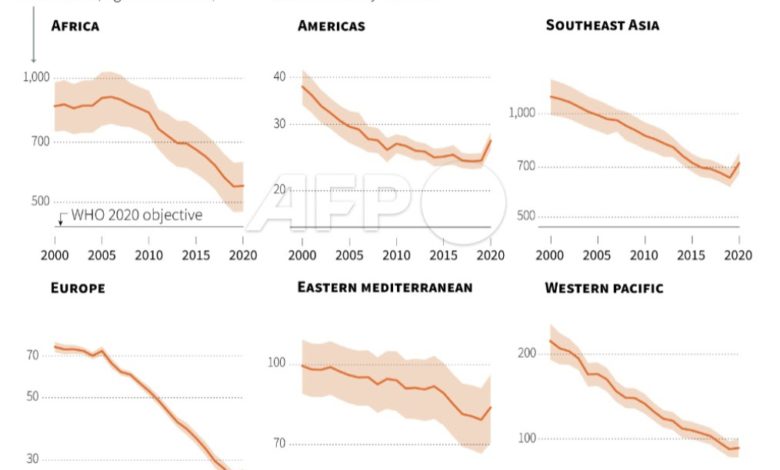WHO Gives Global Tuberculosis Outbreak Resurgence Warning
Linked to the disruptions in access to healthcare because of the COVID-19 pandemic, the World Health Organisation (WHO) has estimated in an annual report that 1.5 million people have died of tuberculosis and around 4.1 million people have tuberculosis but have not been diagnosed or officially declared.

The World Health Organisation (WHO) has warned that tuberculosis has resurfaced globally since it was last recorded decades ago.
The global health organisation stated on Thursday, Oct. 14, that the current health situation is worse for people with tuberculosis, as health funds have been redirected toward tackling COVID-19 and people have struggled to access care because of lockdowns.
According to WHO, tuberculosis is the second deadliest infectious disease after COVID-19 caused by a bacteria that often affects the lungs and can be transmitted by air through coughing.
Tedros Adhanom Ghebreyesus, WHO chief, said this news serves as a global wake-up call to the urgent need for investments and innovation to close the gaps in diagnosis, treatment, and care for the millions of people affected by this ancient but preventable and treatable disease.
“The setback has erased years of progress toward tackling the curable disease, which affects millions of people worldwide.”
In its tuberculosis annual report for 2020, WHO detected that due to a growing number of cases undiagnosed and untreated, progress in eradicating the disease has been worse.
The organisation estimates that around 4.1 million people have tuberculosis but have not been diagnosed or officially declared, increasing sharply from 2.9 million cases recorded since 2019.
The report further revealed that there was a drop in the number of people seeking preventive treatment.
It also estimated that some 1.5 million people died from TB in 2020, including 214,000 HIV positive people. The increase in TB deaths, according to the report, has occurred mainly in 30 countries with the highest TB burden.
“Most TB cases occur in just 30 countries, many in poorer nations in Africa and Asia, and more than half of all new cases are in adult men. Women account for 33 percent of cases and children 11 percent,” Tedros said.
“This report confirms our fears that the disruption of essential health services due to the pandemic could start to unravel years of progress against tuberculosis.”
WHO’s aim is to reduce deaths from TB by 90 per cent, and the incidence rate by 80 per cent, by 2030, but the latest figures threaten to jeopardise the strategy, the report added.
The modelling used in the report predicts the number of people developing the disease and dying from it could be “much higher in 2021 and 2022.”
“The number of people newly diagnosed and cases reported to national authorities fell from 7.1 million in 2019 to 5.8 million in 2020,” the report reads.
India, Indonesia, the Philippines, and China were the main countries that saw a drop in reported cases, these and 12 other countries accounted for 93 percent of the total global decrease in notifications.
The report also found estimated funds on tuberculosis fell from $5.8 billion in 2019 to $5.3 billion a year later. The 2020 figure was less than half of the global funding target for the disease.
“85 percent of people diagnosed with TB diseases can be successfully treated within six months with the right drugs which also helps to prevent transmission of the illness.”
Support Our Journalism
There are millions of ordinary people affected by conflict in Africa whose stories are missing in the mainstream media. HumAngle is determined to tell those challenging and under-reported stories, hoping that the people impacted by these conflicts will find the safety and security they deserve.
To ensure that we continue to provide public service coverage, we have a small favour to ask you. We want you to be part of our journalistic endeavour by contributing a token to us.
Your donation will further promote a robust, free, and independent media.
Donate HereStay Closer To The Stories That Matter




